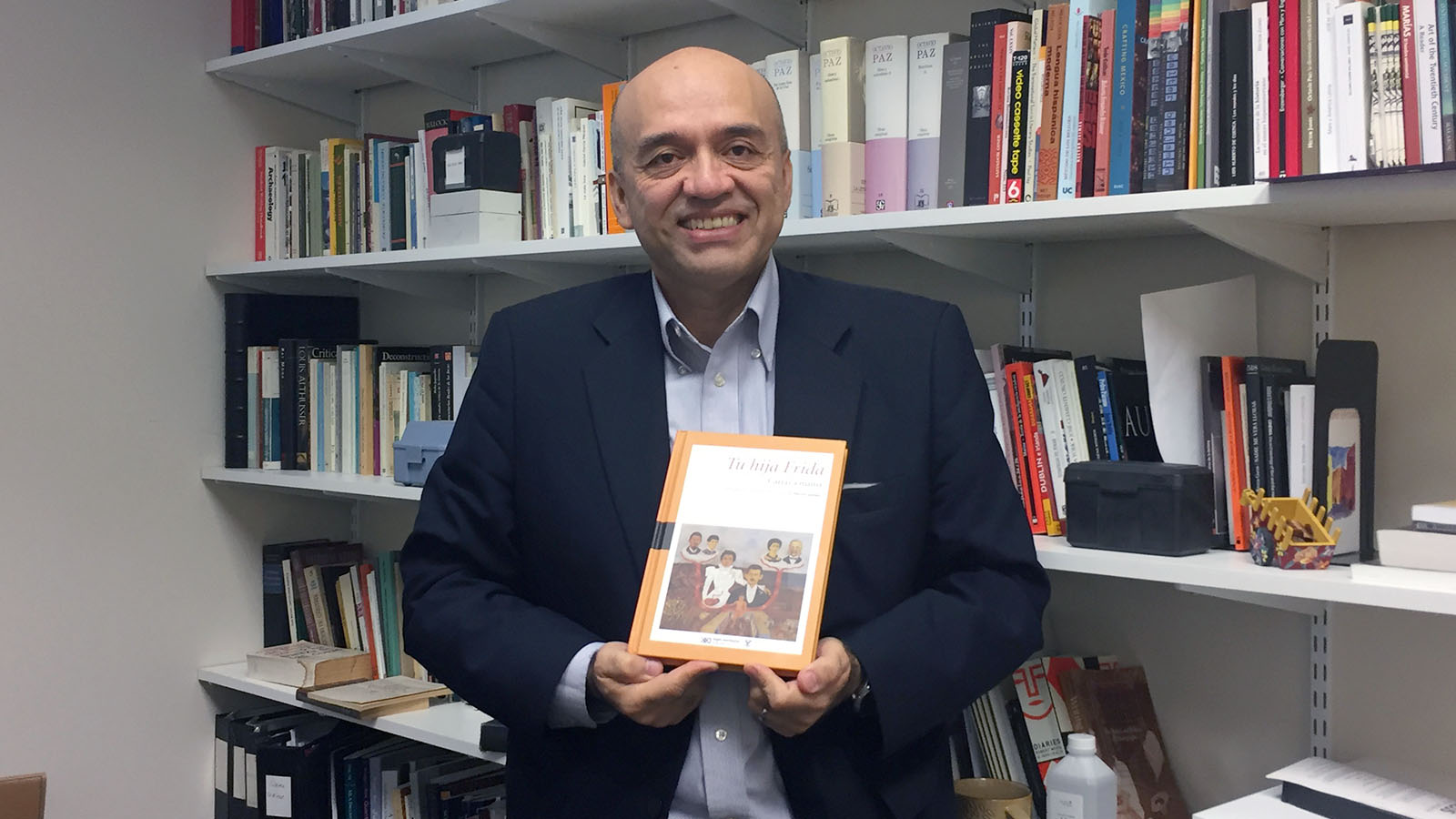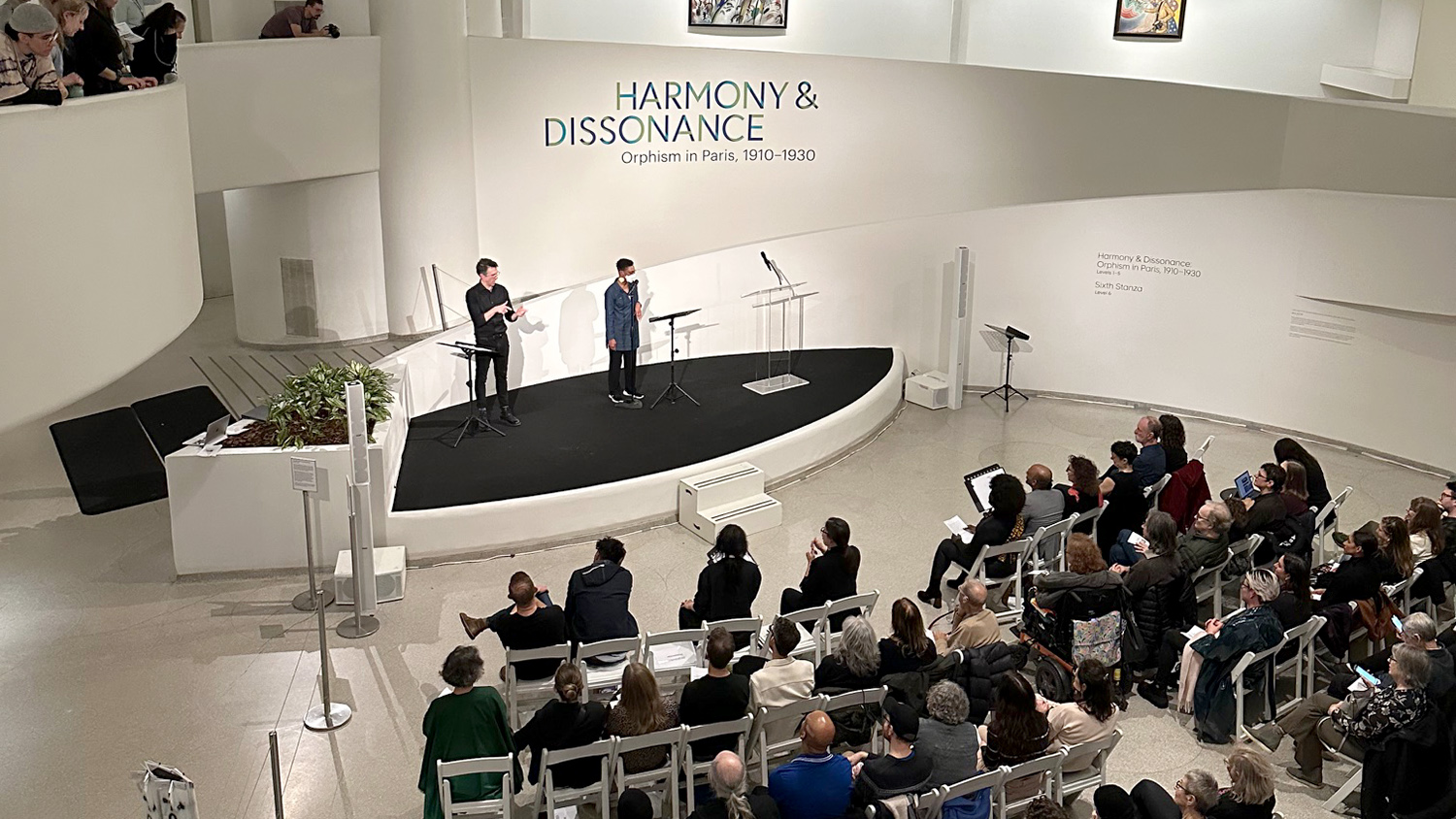New Book Reveals Letters from Mexican Artist Frida Kahlo to Her Mother

When it comes to the great artists of Mexico, “the big three” — David Alfaro Siqueiros, Jose Clemente Orozco, and Diego Rivera — usually come to mind. These were truly some of the most amazing artists of Mexico, but there was one more artist that hailed from this country with a talent for art, and her name is Frida Kahlo. Recently, Foreign Languages and Literature professor Dr. Héctor Jaimes published the book Tu hija Frida: Cartas a mamá (Spanish for Your Daughter Frida: Letters to Mom), a critical compilation of letters written by Kahlo during her time in the United States in the 1930’s. The book was released last October by one of Latin America’s most prestigious publishing houses, Siglo XXI.
While studying and researching the Mexican muralist movement a few years back, Jaimes came across a bulk of letters from Kahlo addressed to her mother. “I realized it was a big discovery,” he recounts, “The letters were not only unpublished, but the quality and content of the letters would be something no one had ever seen before.” These letters unfolded Kahlo’s world views and how she explored the depth of the trade of becoming a painter. This was all in her words. Untouched and unfiltered.
Before becoming a painter, Kahlo had a difficult upbringing, with her parents often being sick along with her own health problems. She suffered from polio at a young age. Later, at the age of eighteen, she was involved in a brutal car accident that affected her health for the rest of her life. And if that wasn’t bad enough, her personal life was also quite traumatic. In later years, she married Mexican painter Diego Rivera, but their marriage was quite a roller coaster. There were infidelities and irritable tempers. For instance, Rivera had a love affair with Kahlo’s sister. To add to her pain, she had many miscarriages. The car accident affected her chances of having a child. In her letters, she tells her mother that her biggest regret was always not being able to be a mother — something she really aspired to.

Despite her difficult personal life, Kahlo was very close to both her parents, particularly to her mother. For instance, in her painting My Grandparents, My Parents, and I — a photograph of which serves as cover to the book — the mother is raised and stands higher than the father. This may have been a clue on Kahlo’s relationship with her mother, a relationship almost unknown until these letters came to light.
The correspondence started when she was a teenager, and many of these early letters are included in the book. Some are long notes while others are full-fledged testimonies of her life at the time. “It is apparent that she had a writing relationship with her mother, something that is very unique,” remarks Jaimes. This strong writing relationship between mother and daughter is also quite indicative of the importance of Mexican family and culture.
Most of the letters were written in the early 1930’s when Kahlo came to the US with her husband. He was commissioned to paint two murals in San Francisco and was busy with his work. Kahlo wrote to her mother during this time to tell her about the loneliness and boredom that marked this period of Kahlo’s life. Then, it was out of this loneliness and boredom that she began to focus on her own paintings. Through her letters, readers learn how Rivera was quite encouraging about her work and even suggested she put together an exhibit. This gave her the confidence to move forward in the production of her own artwork.
The letters unveil a new voice of Kahlo’s. She has such a way of telling her story and sharing her experiences. “What was surprising to me was to learn how fresh that voice was, how pure, how open, how non-schematic, non-traditional, how free styled she was,” explains Jaimes. Kahlo’s letters help the audience get inside her head and are a tool to help interpret the artist’s work.
Letters are a private means of communication between two people, but Kahlo’s letters help to interpret not only her art, but also herself. She has indirectly put forth a way of interpreting herself as a woman, a daughter, and an artist as well as her work. Critics and writers debate about the original text, voice, and source, but here in this book, the documents are all from Kahlo’s raw views of the world and everything in it. Readers will learn about how she was and how she describes her experiences in San Francisco including the art scene in the city. It is her testimony with no edits.
The book tells a story through letters and allows readers to get inside Kahlo’s mind. It would not be shocking if this book was translated into English. “I can only hope,” prof. Jaimes sighs. In the meantime, he will be presenting the book at the Guadalajara International Book Fair in late November 2016. So far the book has received a lot of attention from the Latin American press, particularly in Mexico.
The publication of this book shows just how universal language and cultural scholarship can be. “You don’t have to be tied to one place,” prof. Jaimes reminds us. The production of language and culture occurs anywhere and so can its research. A curious NC State professor finds a bulk of unpublished letters from a Mexican artist in Washington, DC, and then he is inspired to publish a critical edition of these letters thousands of miles away in Mexico. Words as well as ideas are not tied to just one place. Prof. Jaimes’ cutting-edge scholarship and driven research illustrated the widespread use of language and culture and the way it drives our interconnected world.


